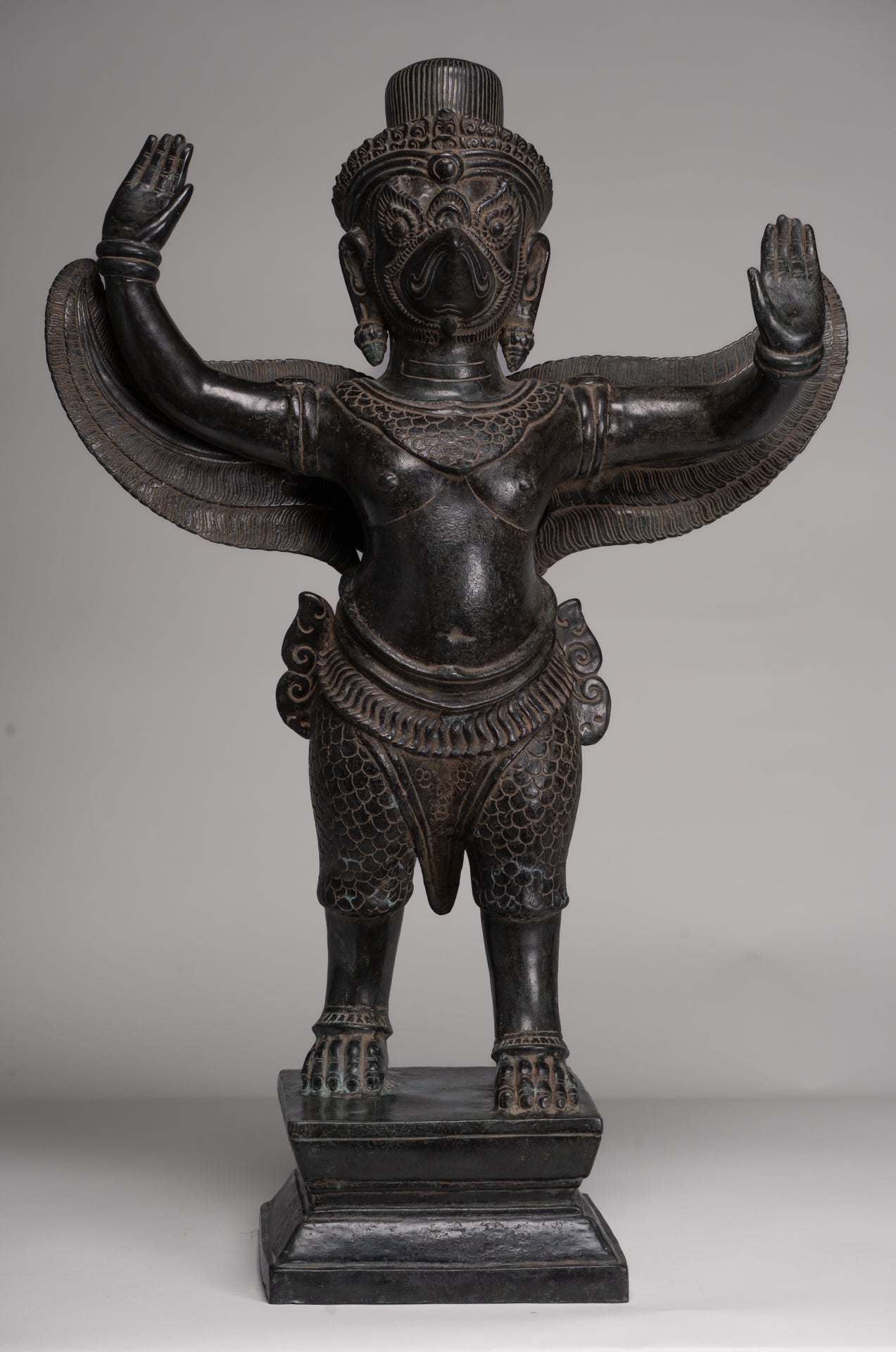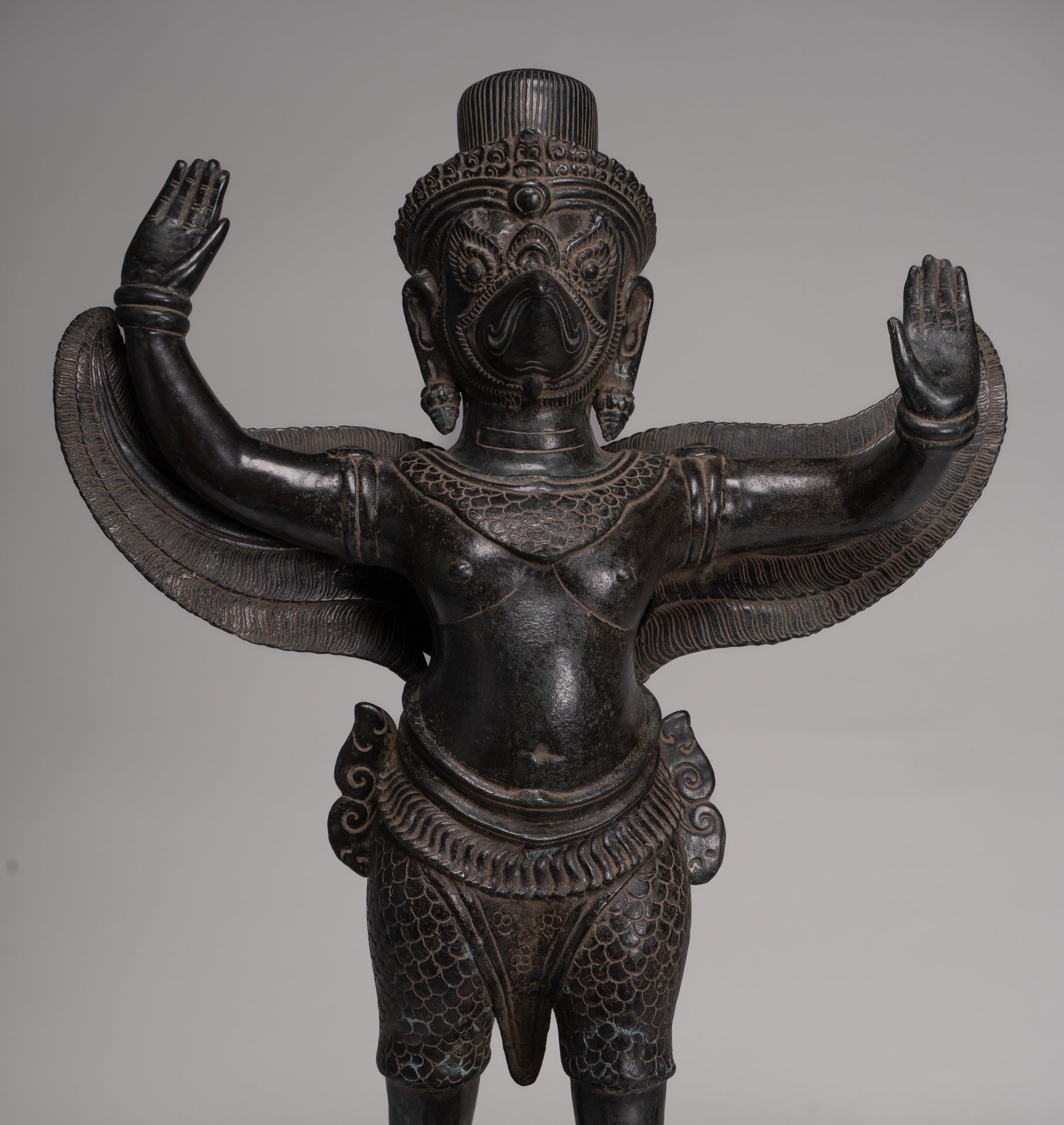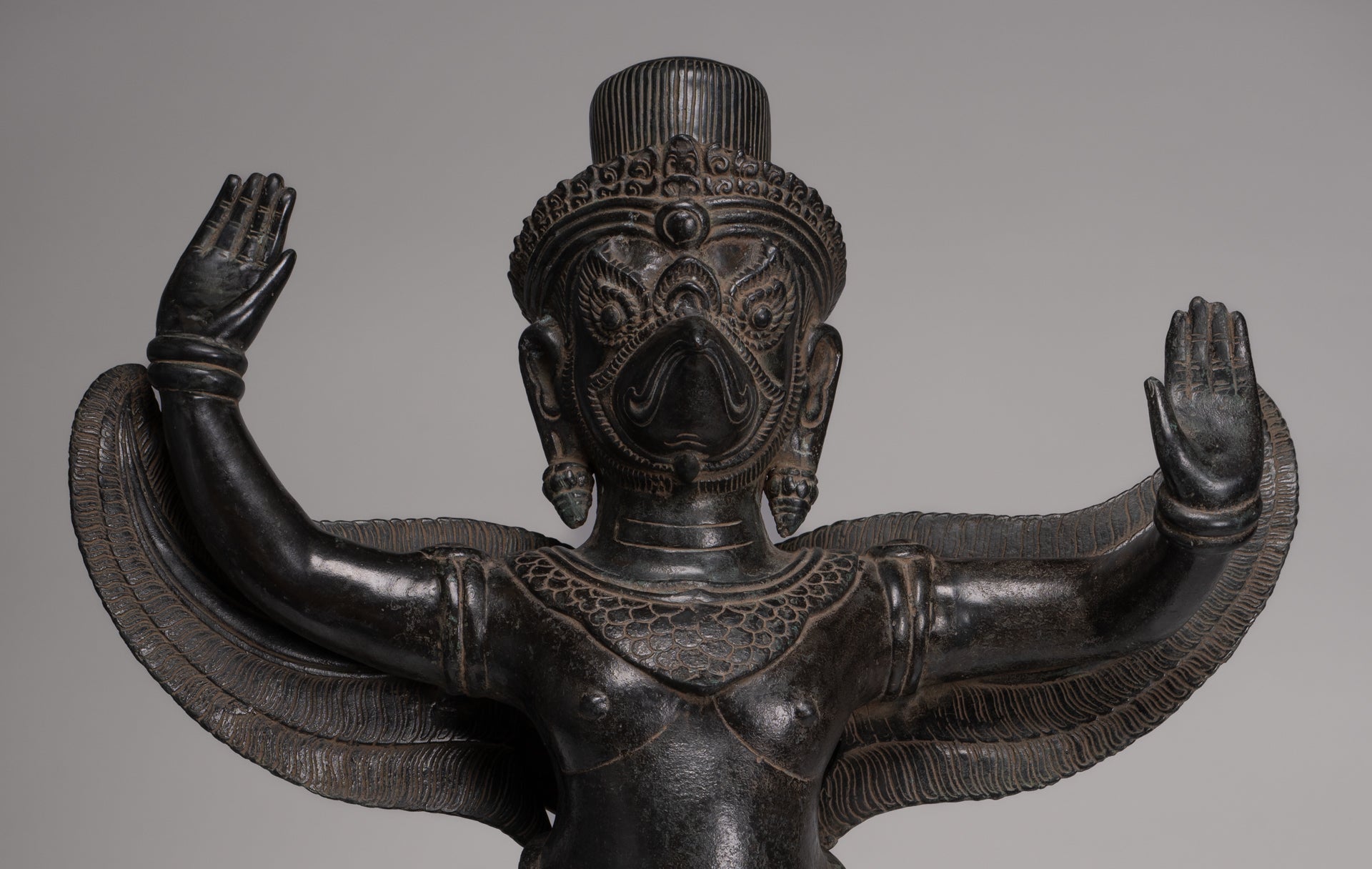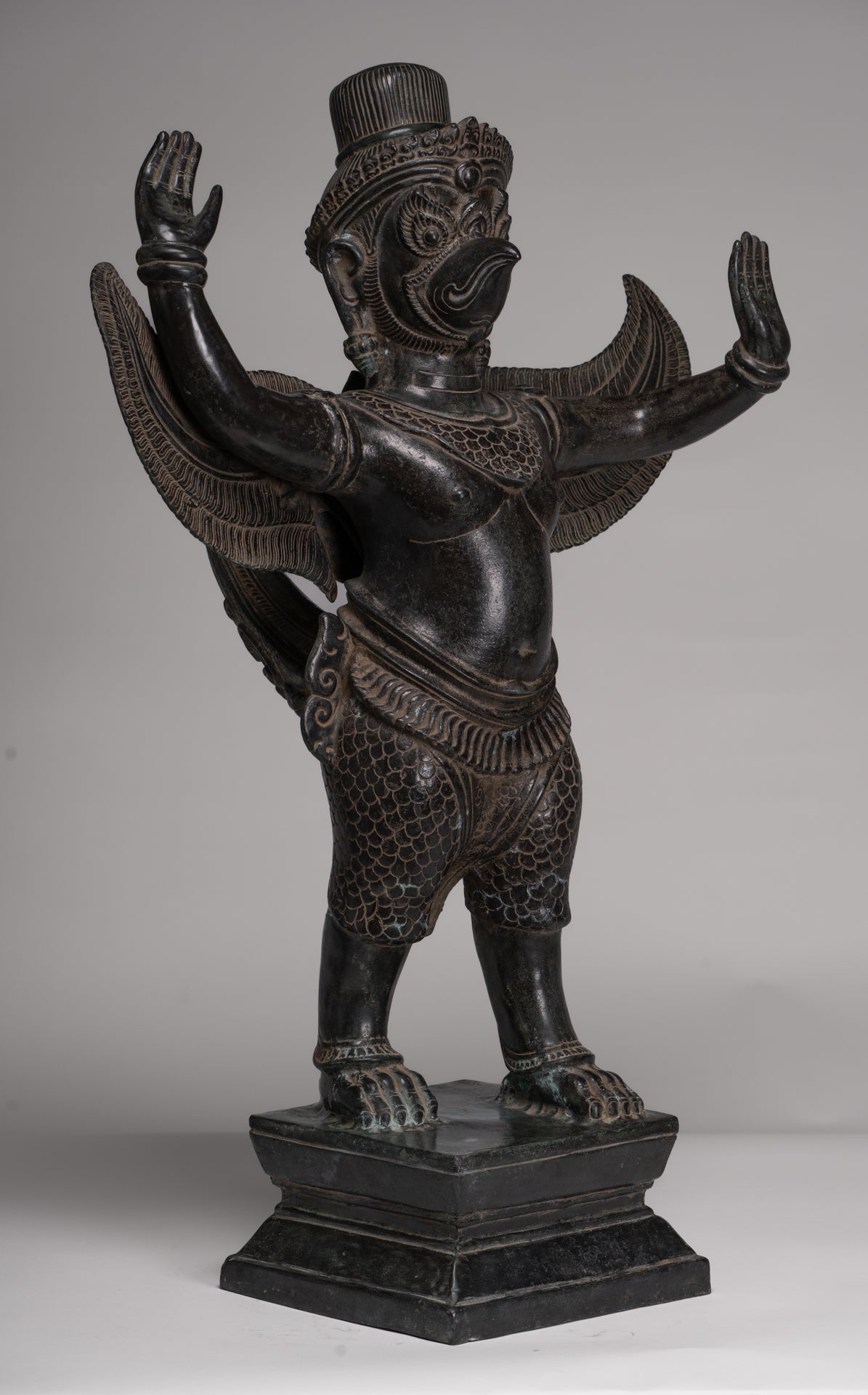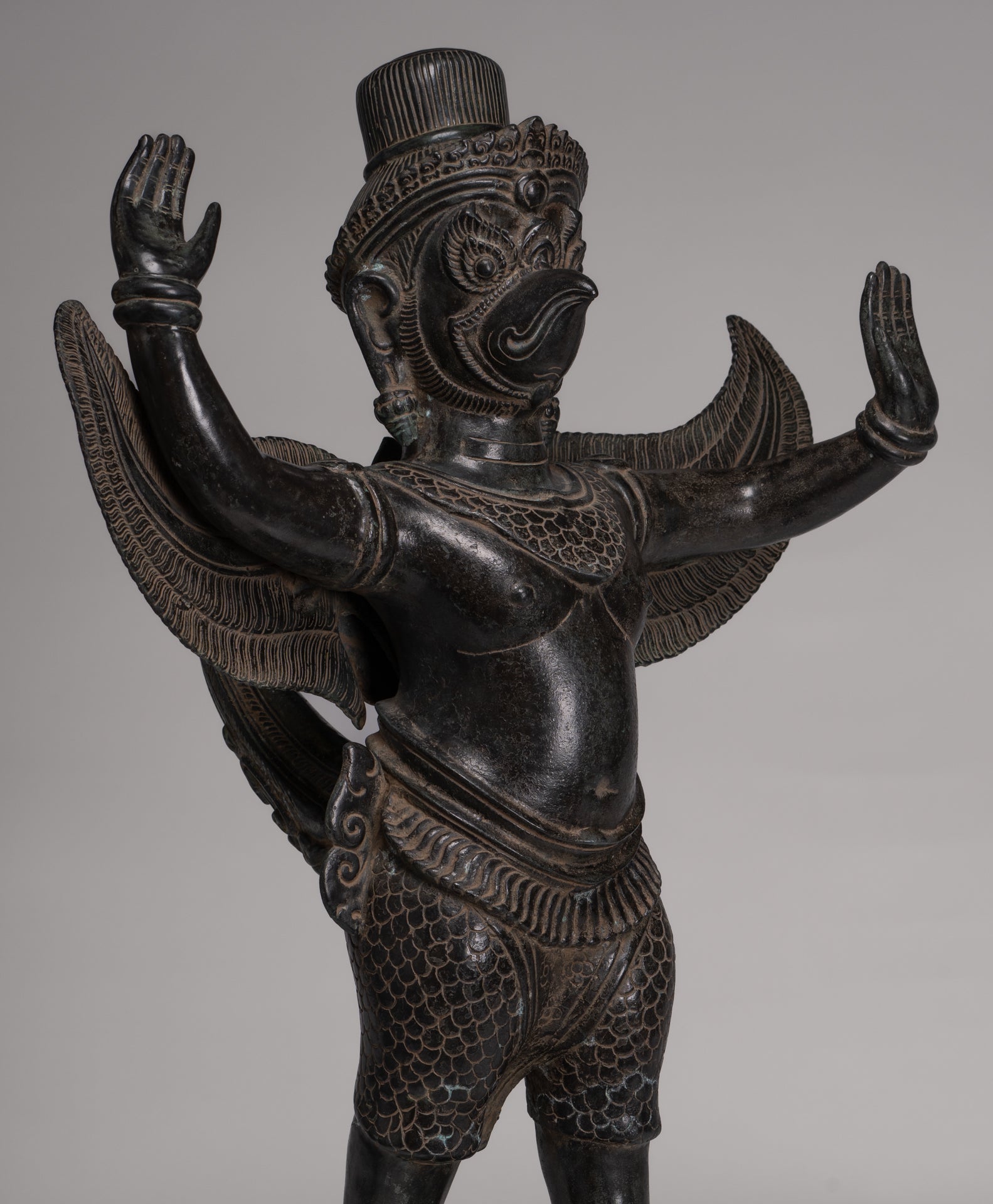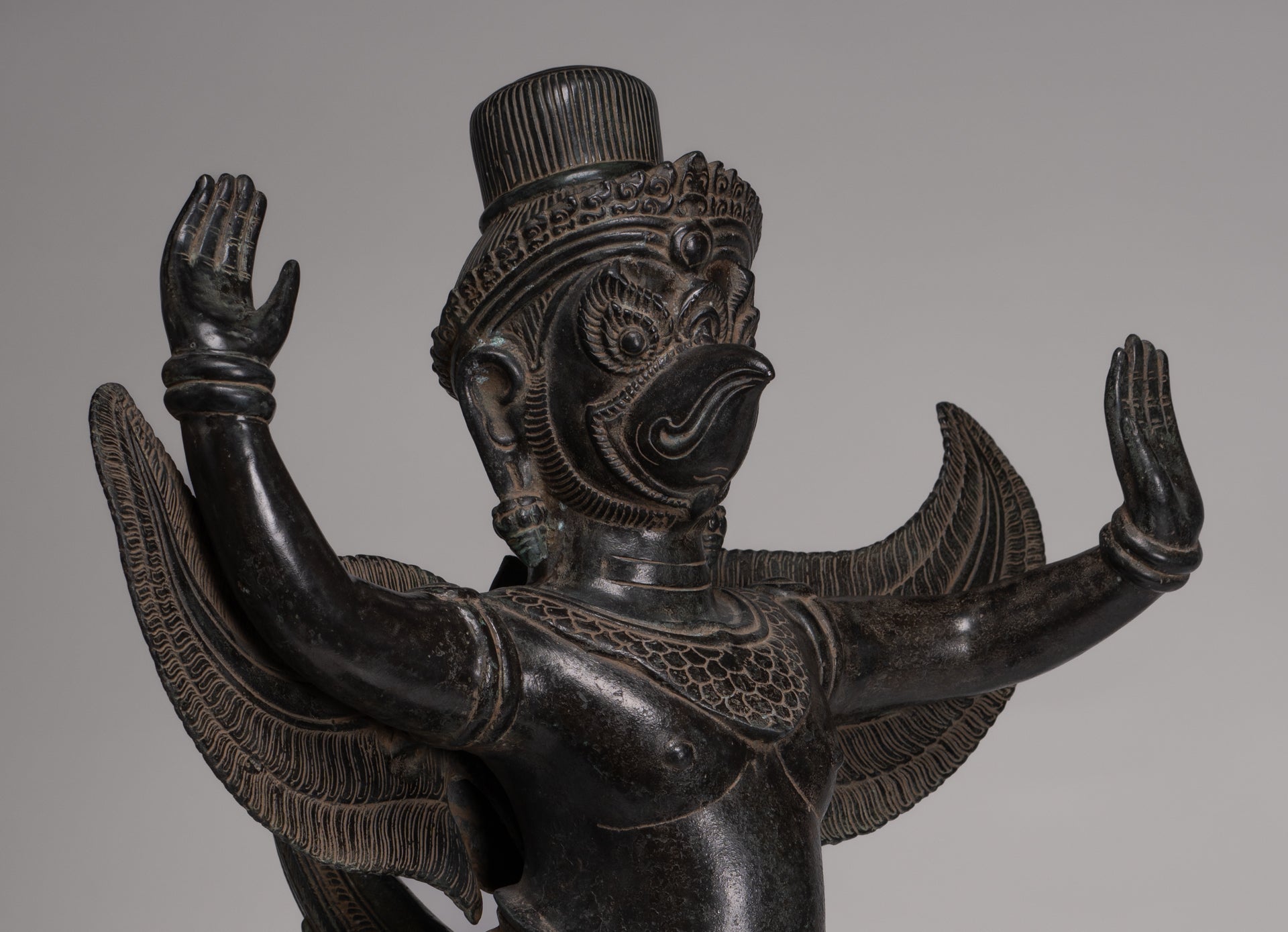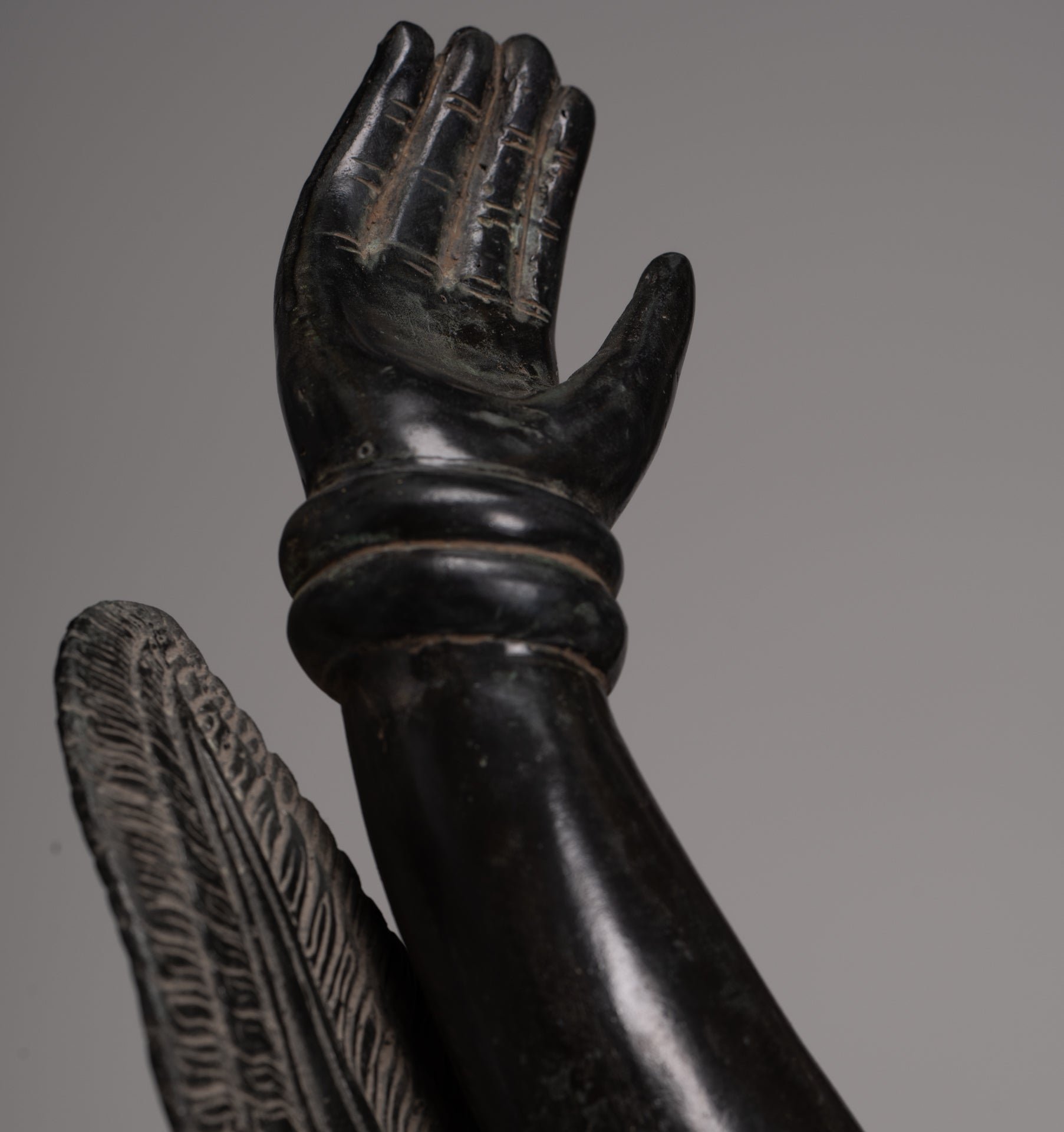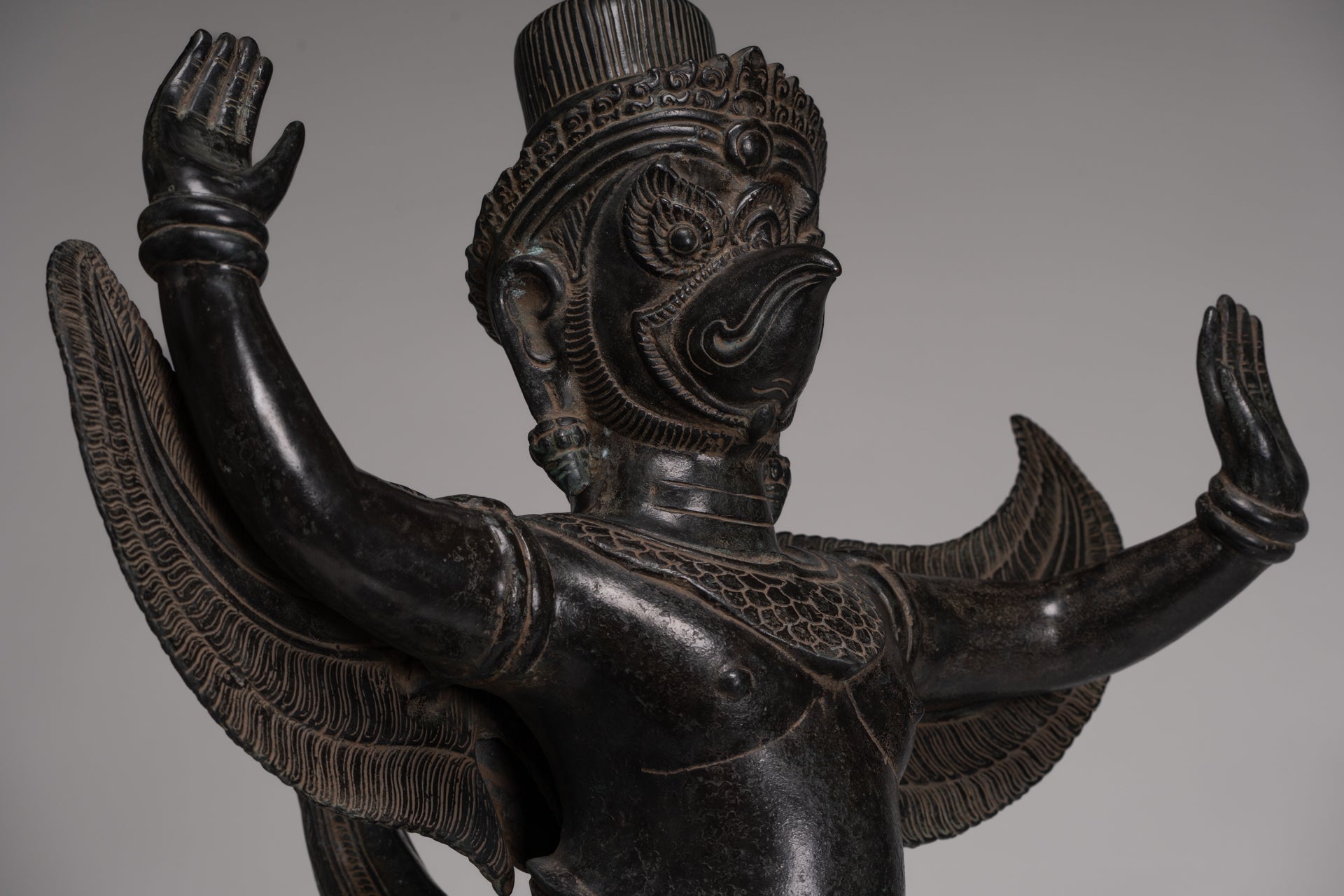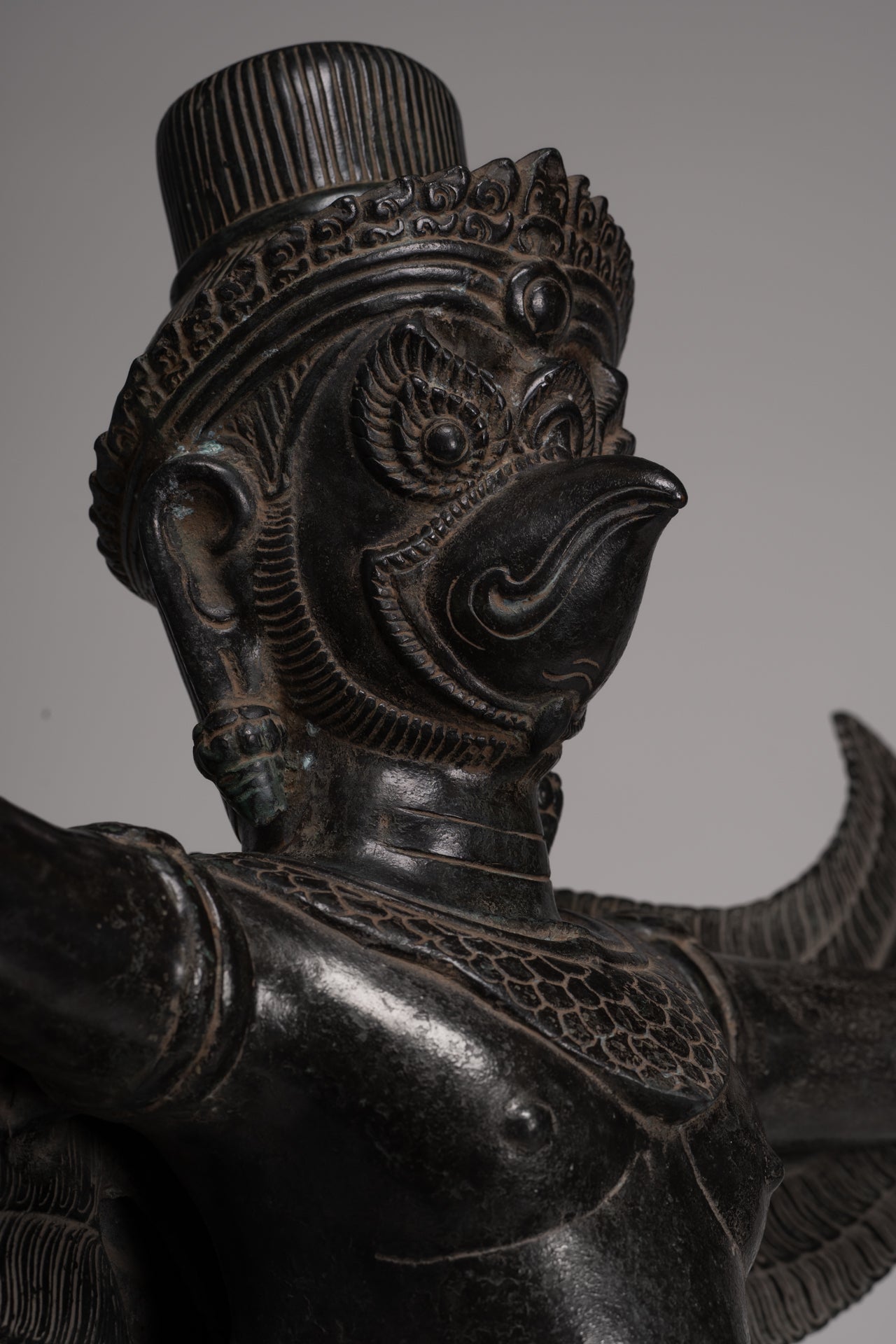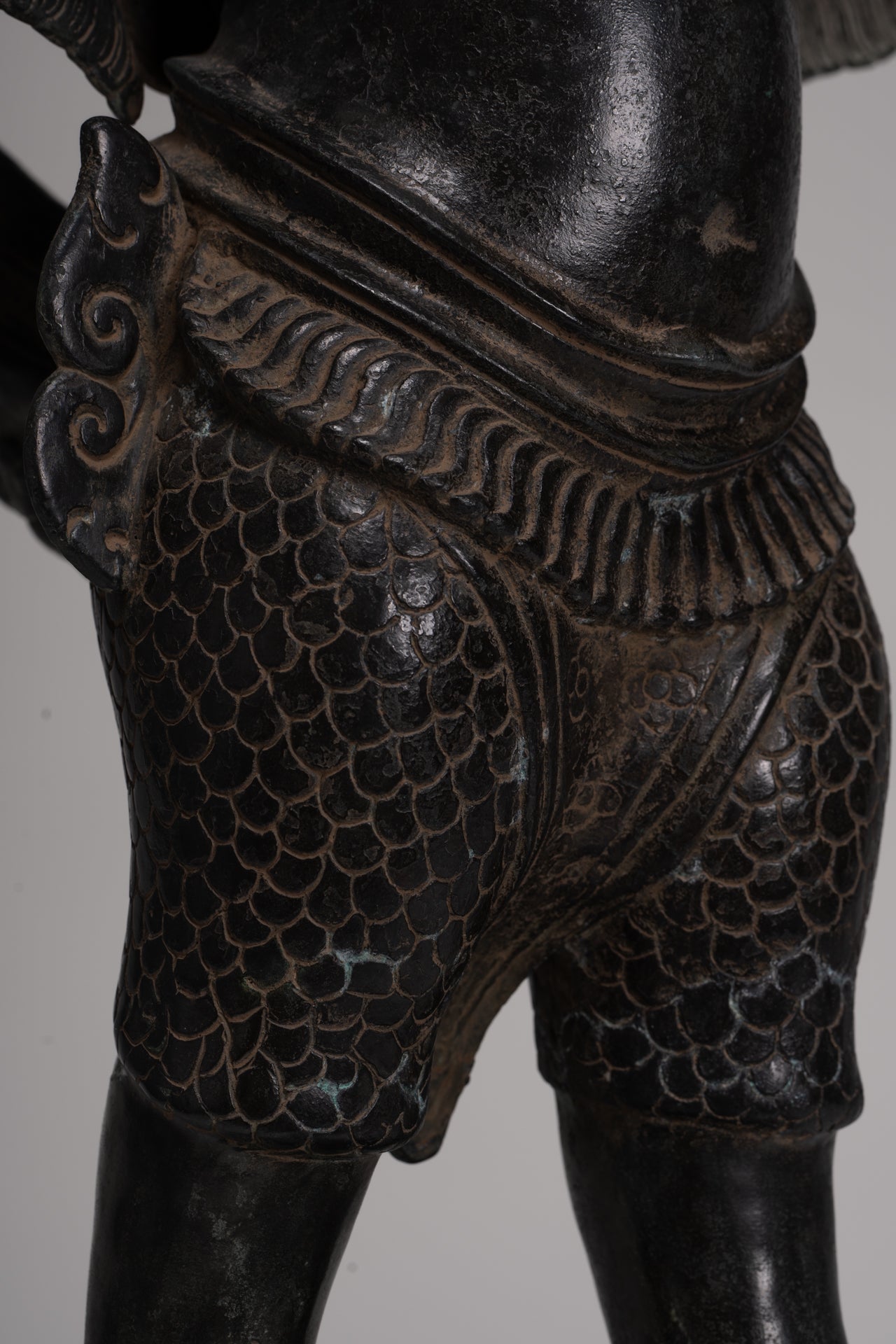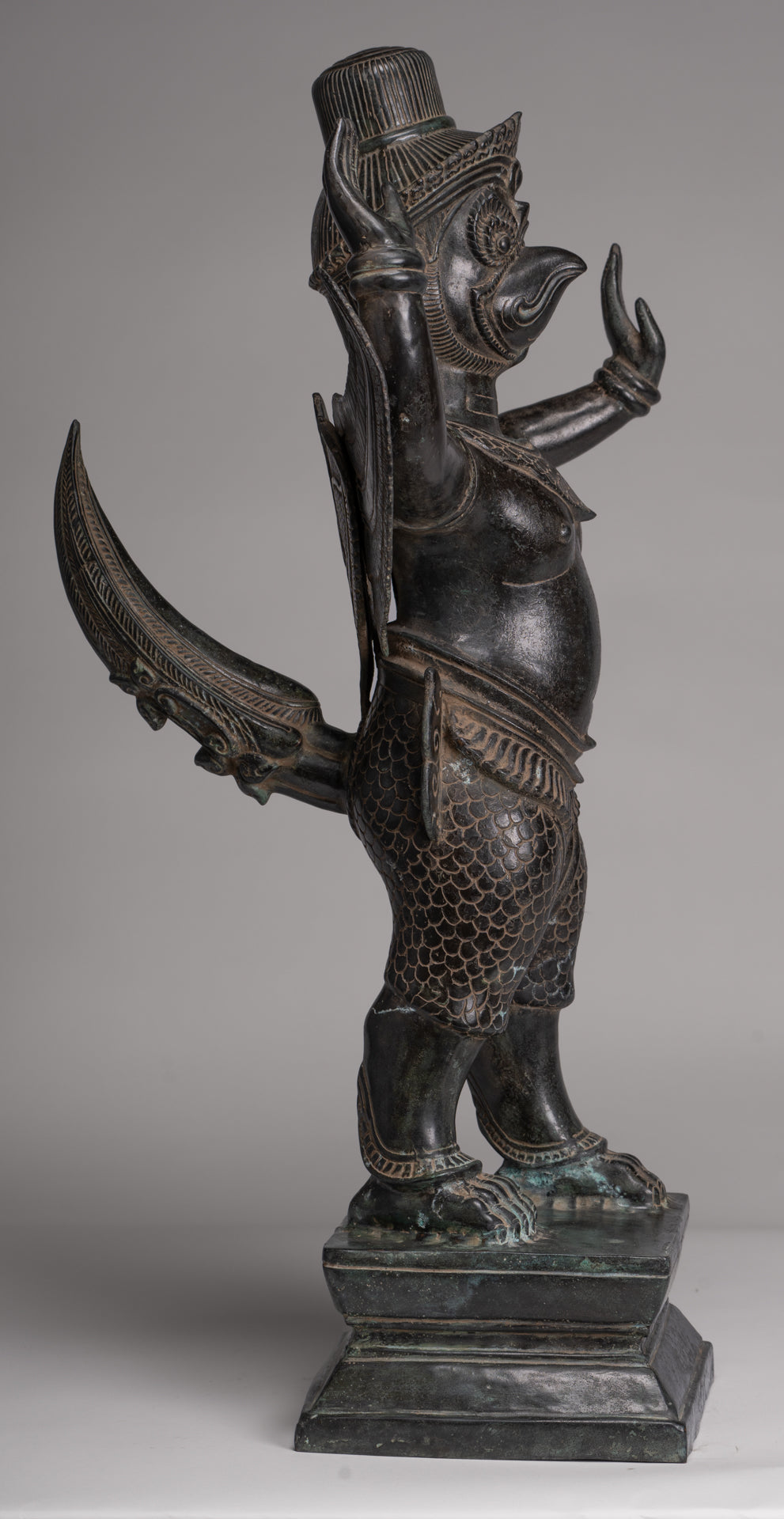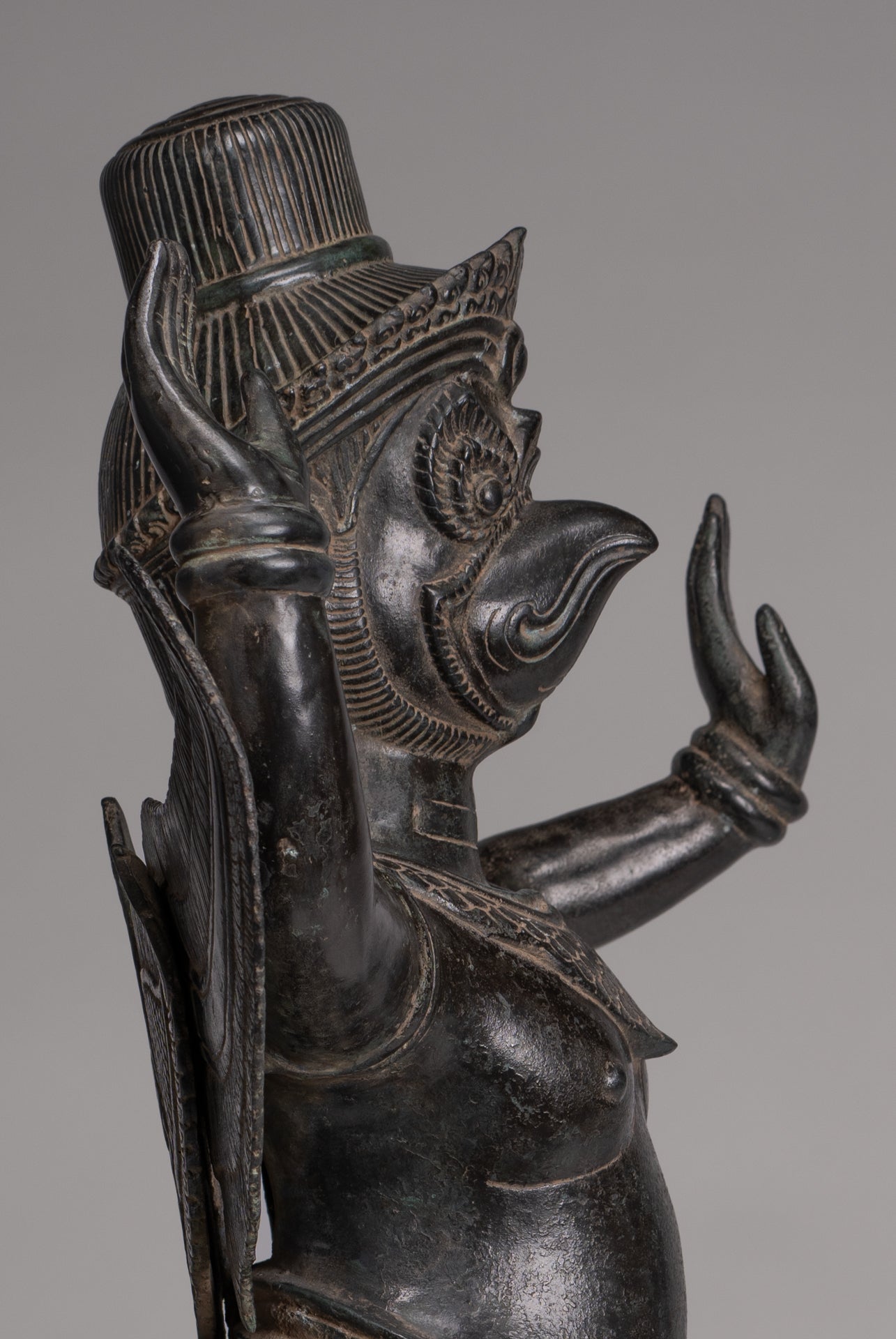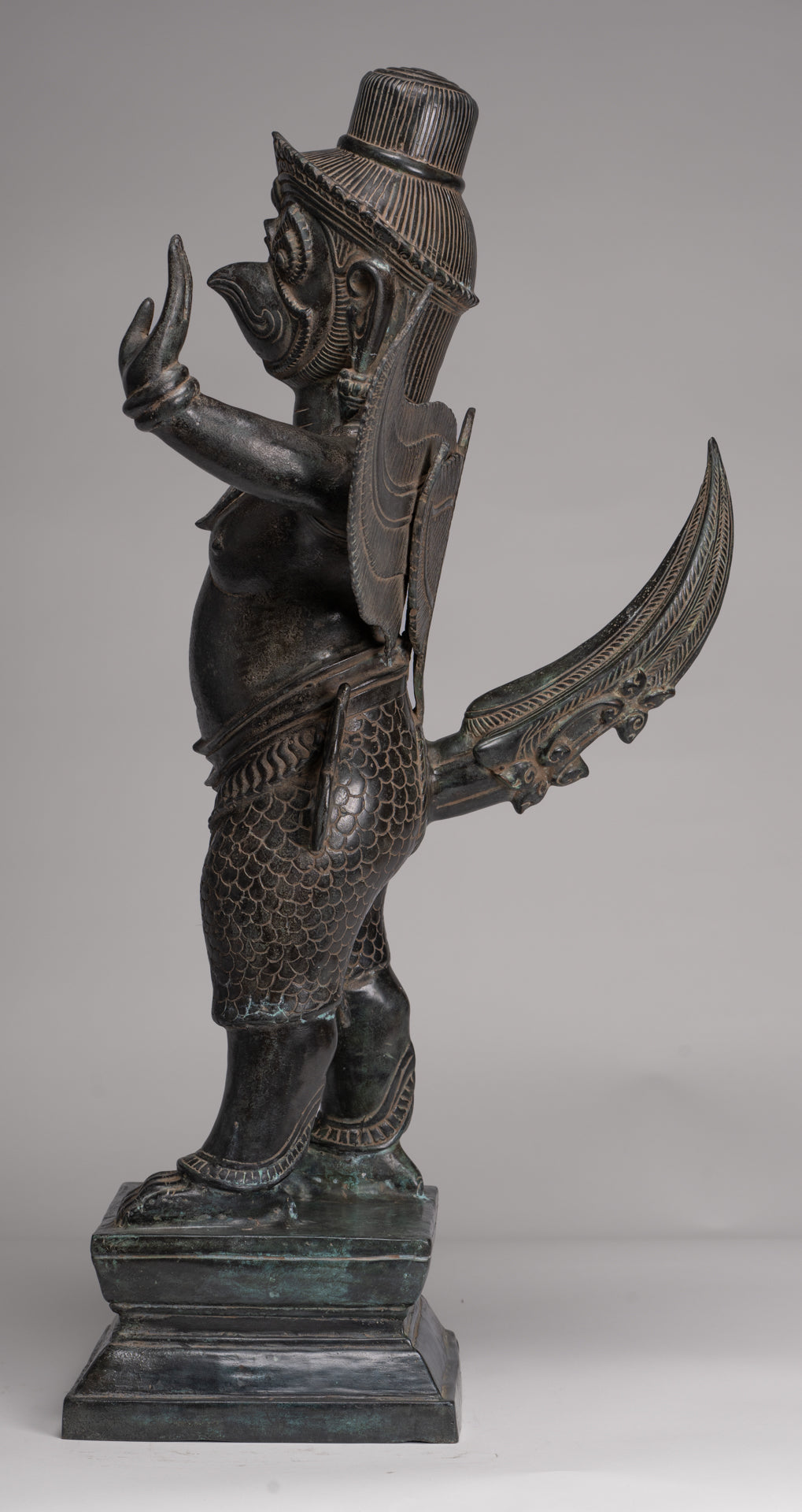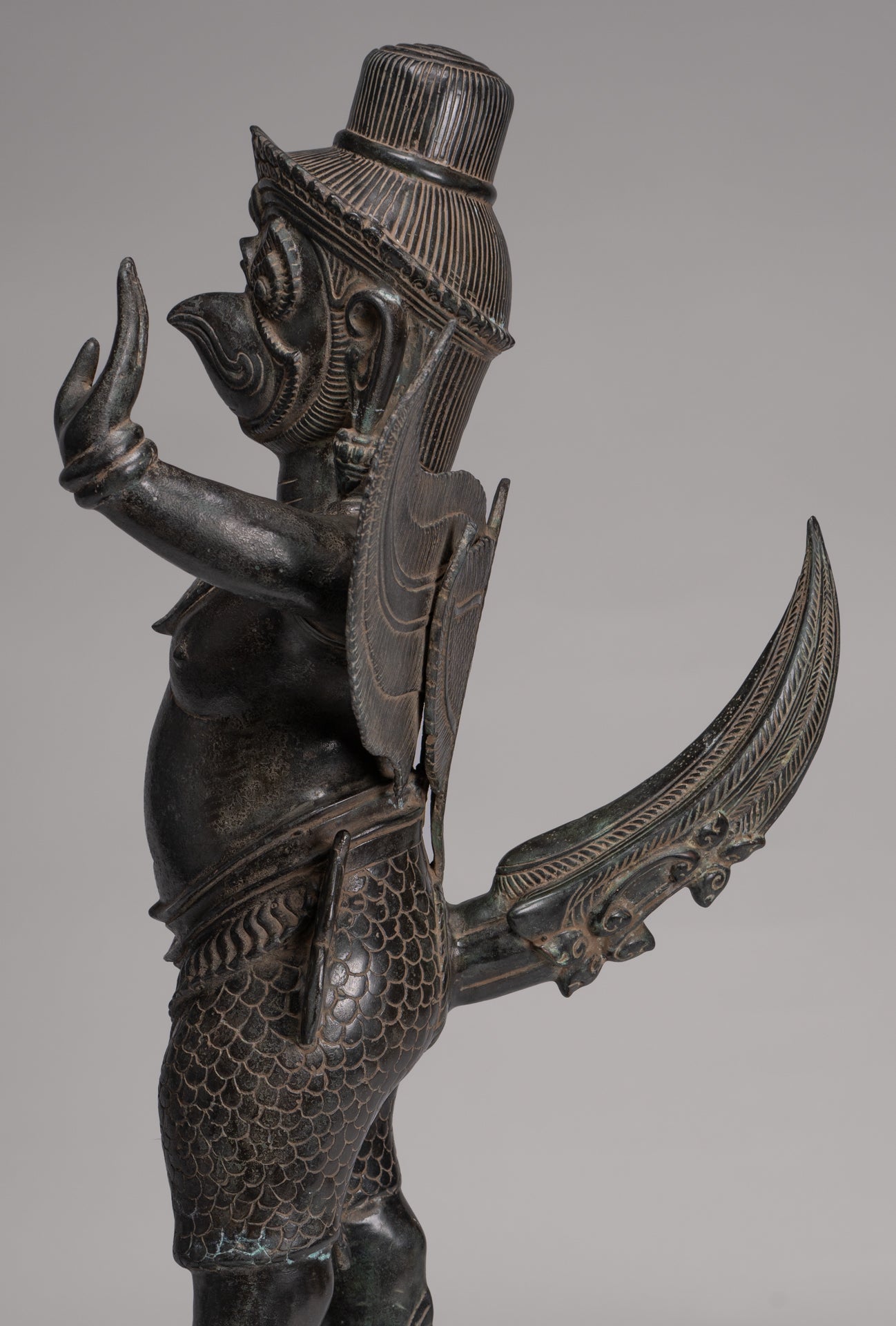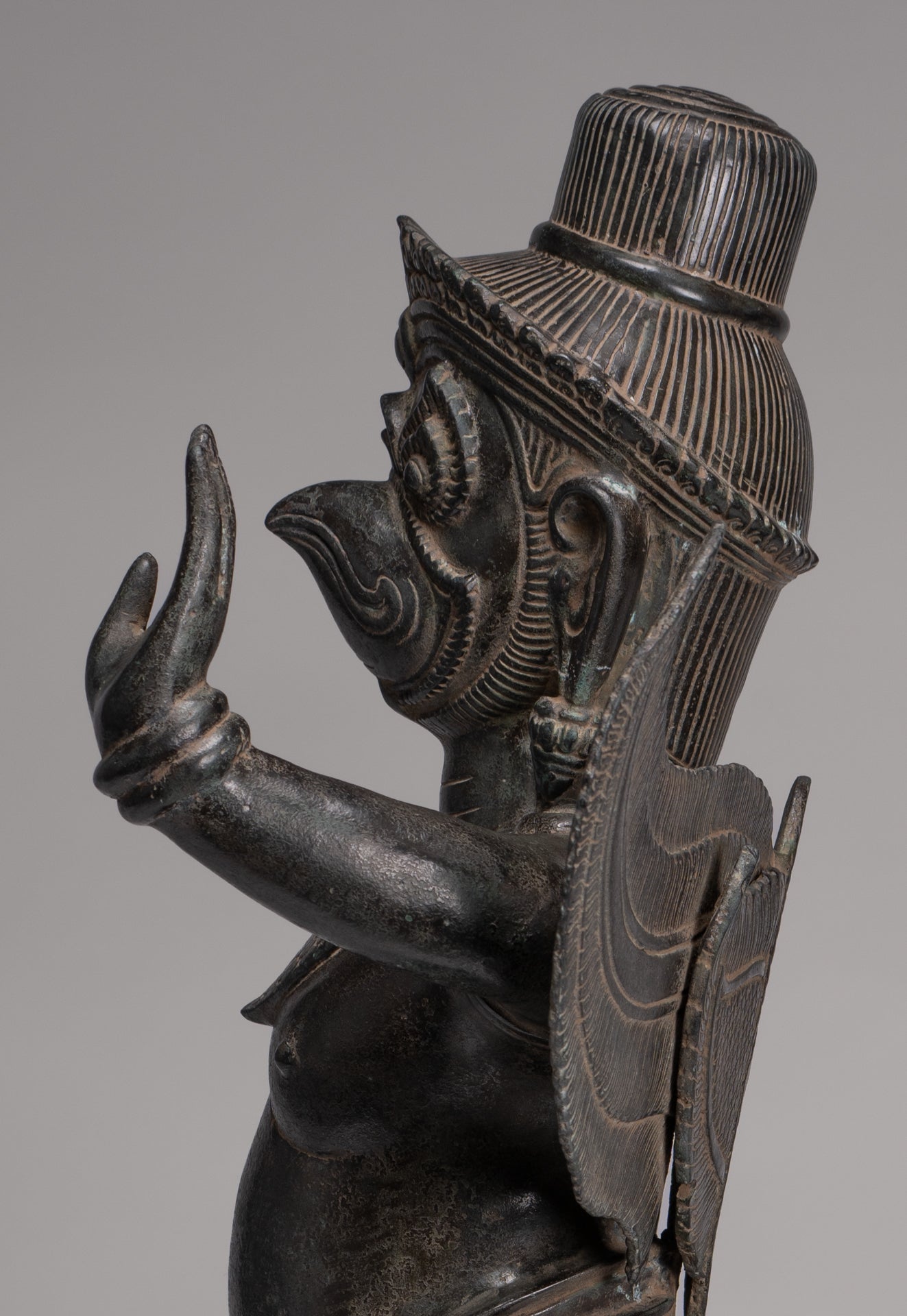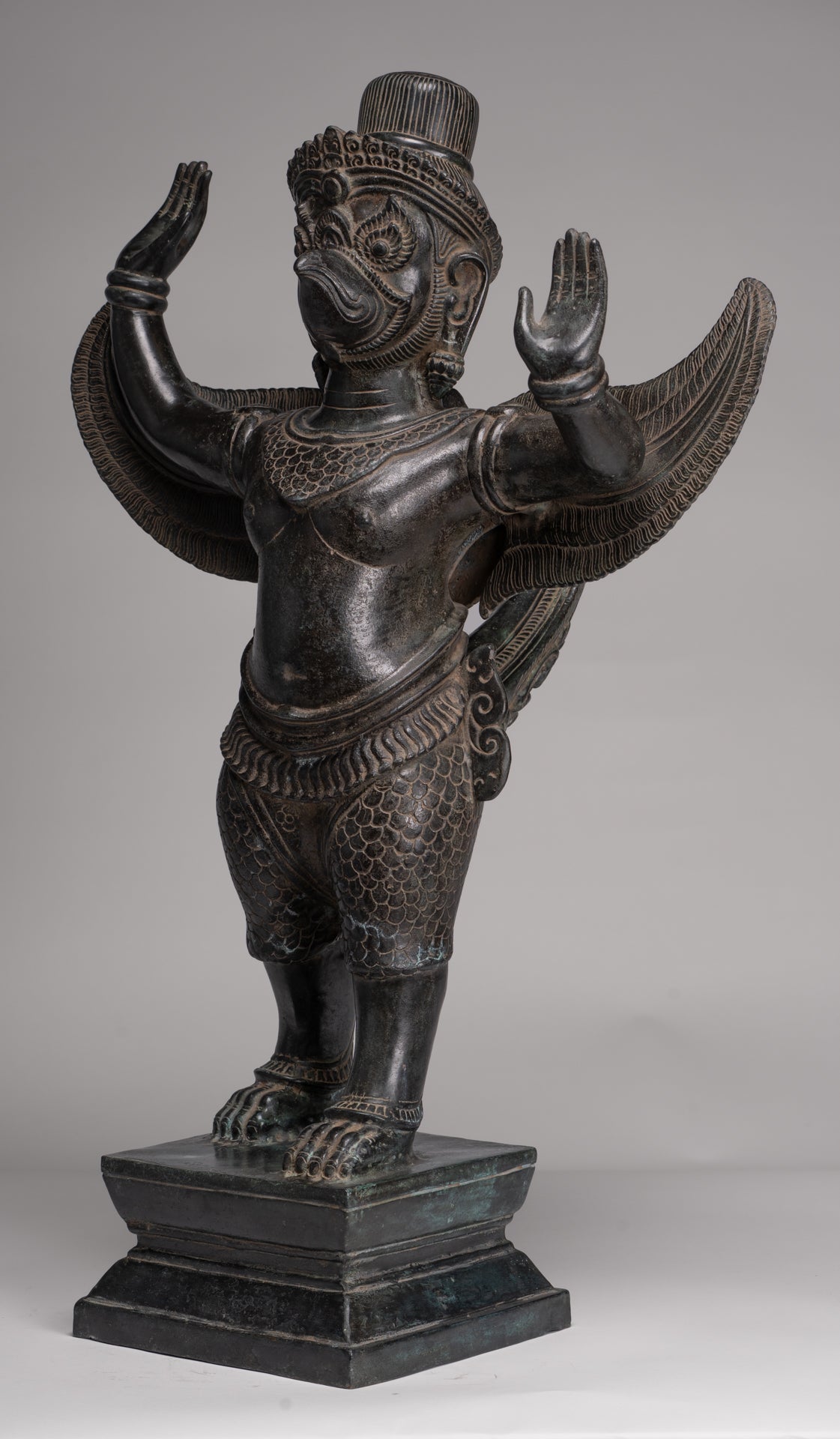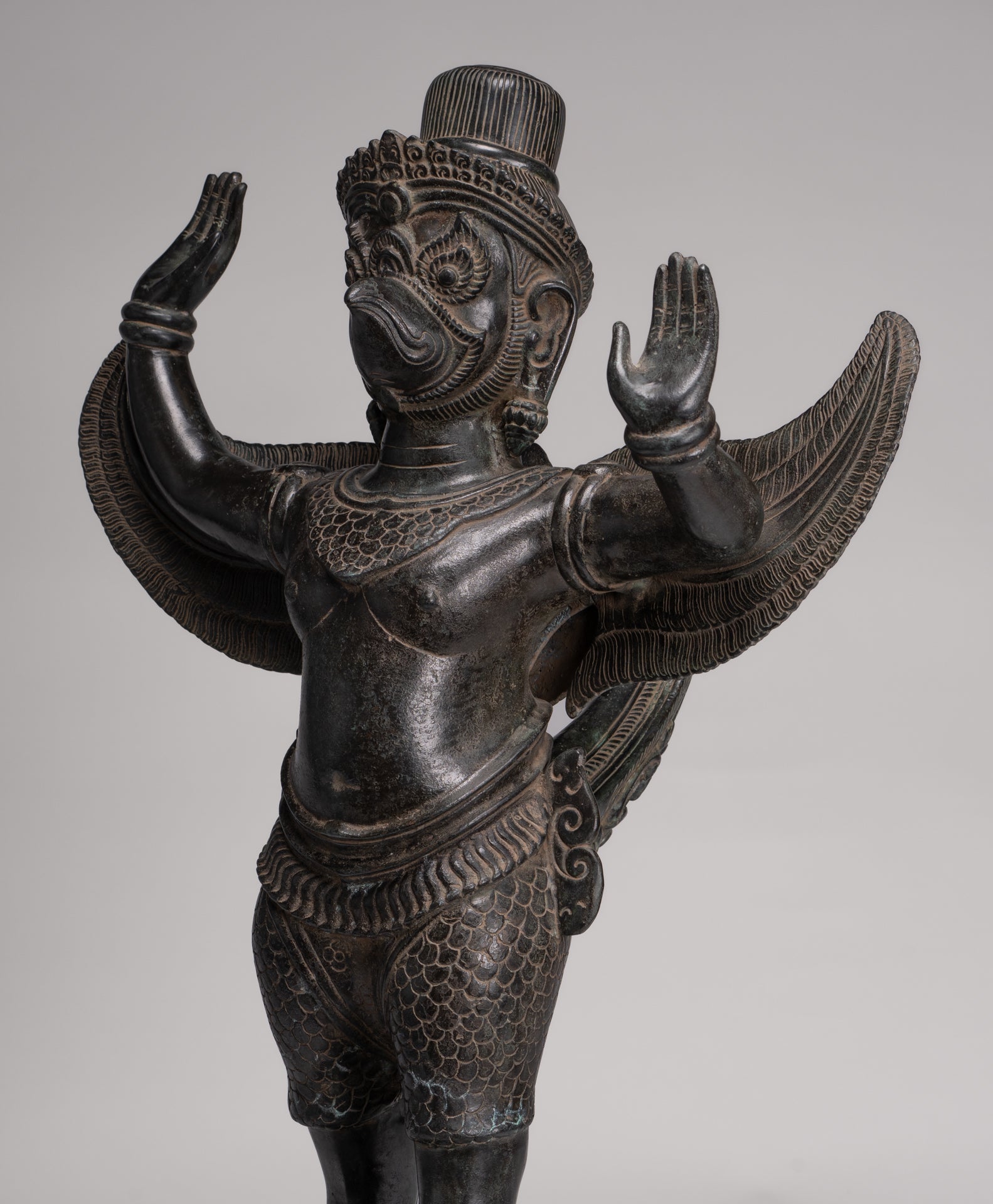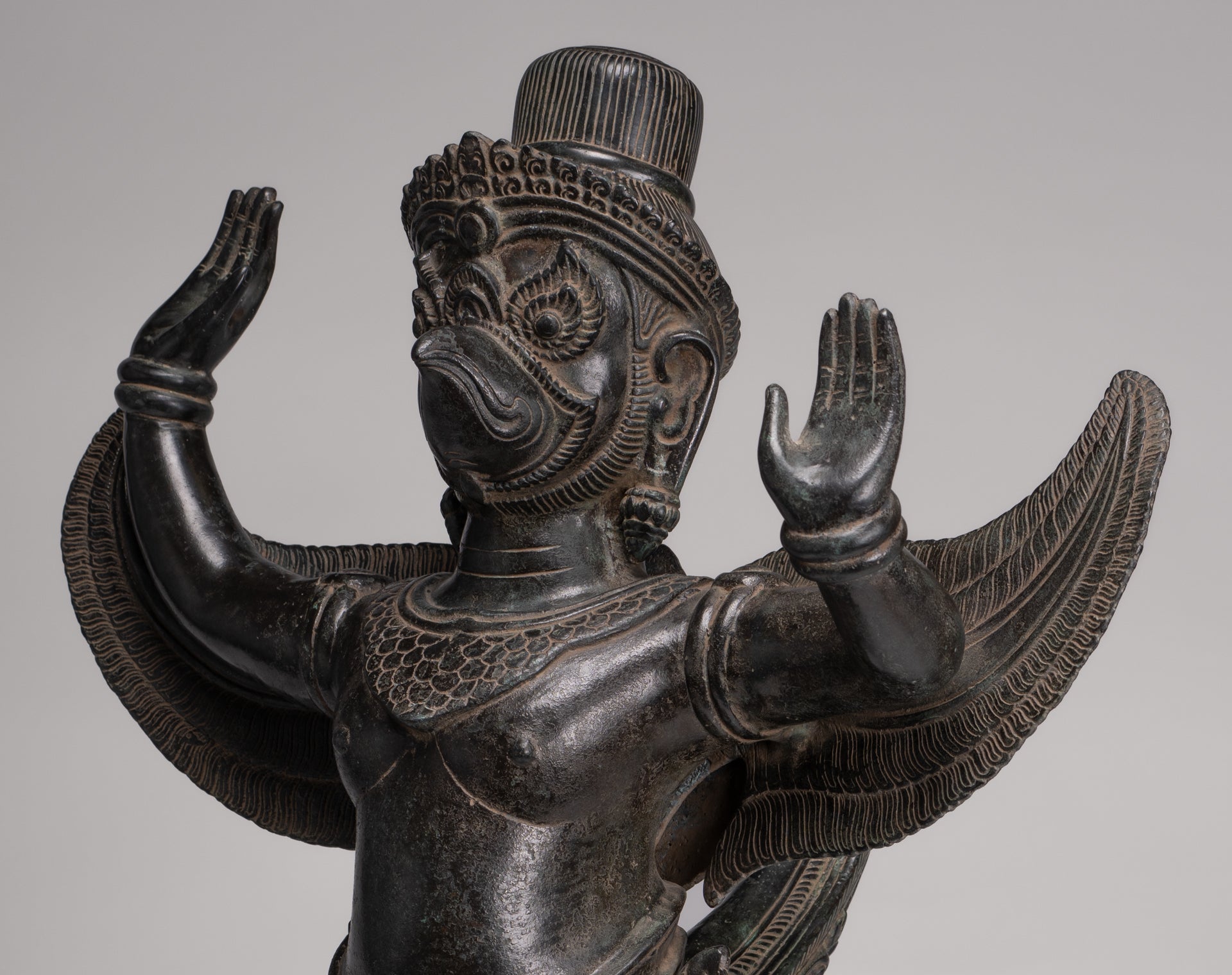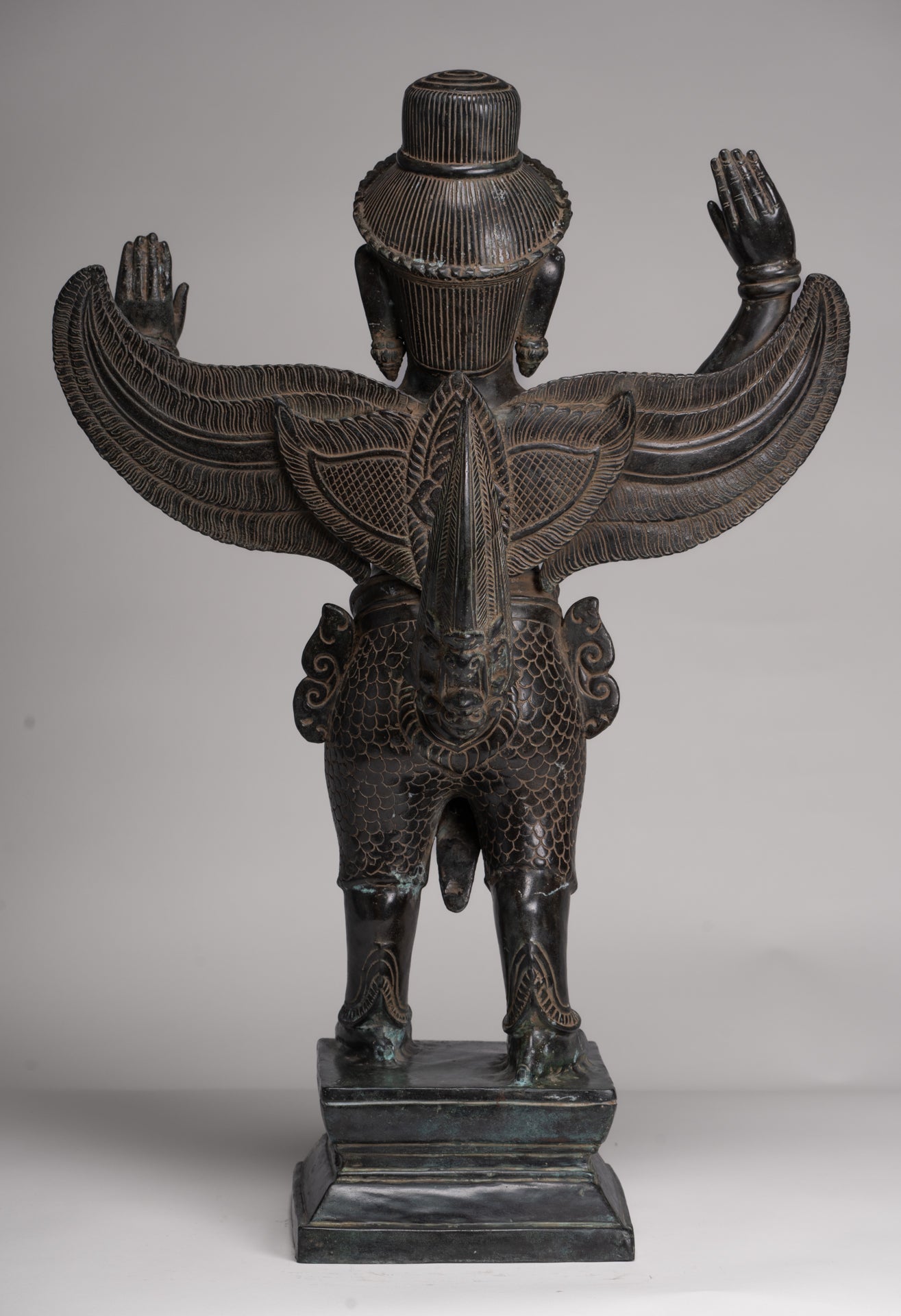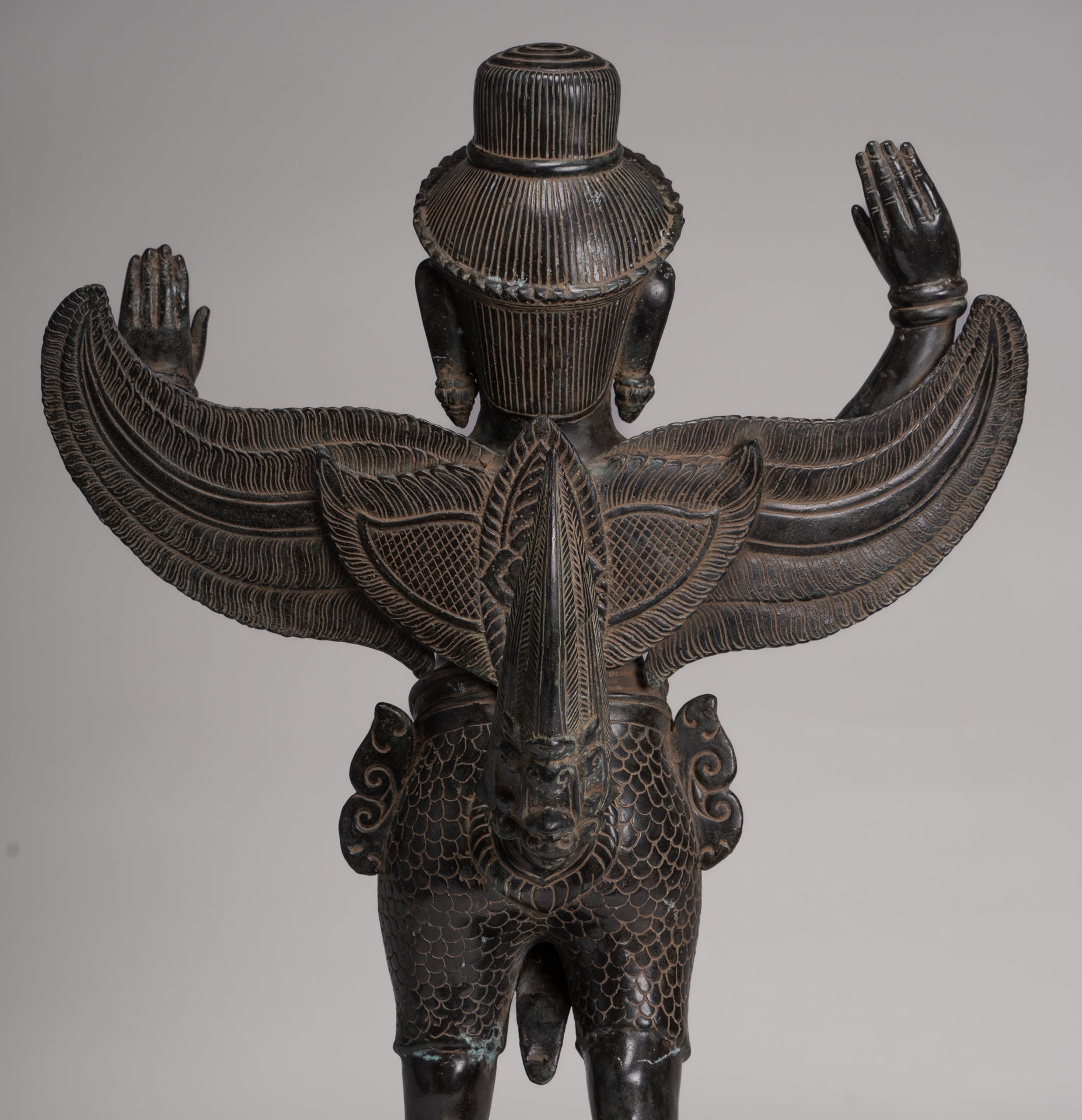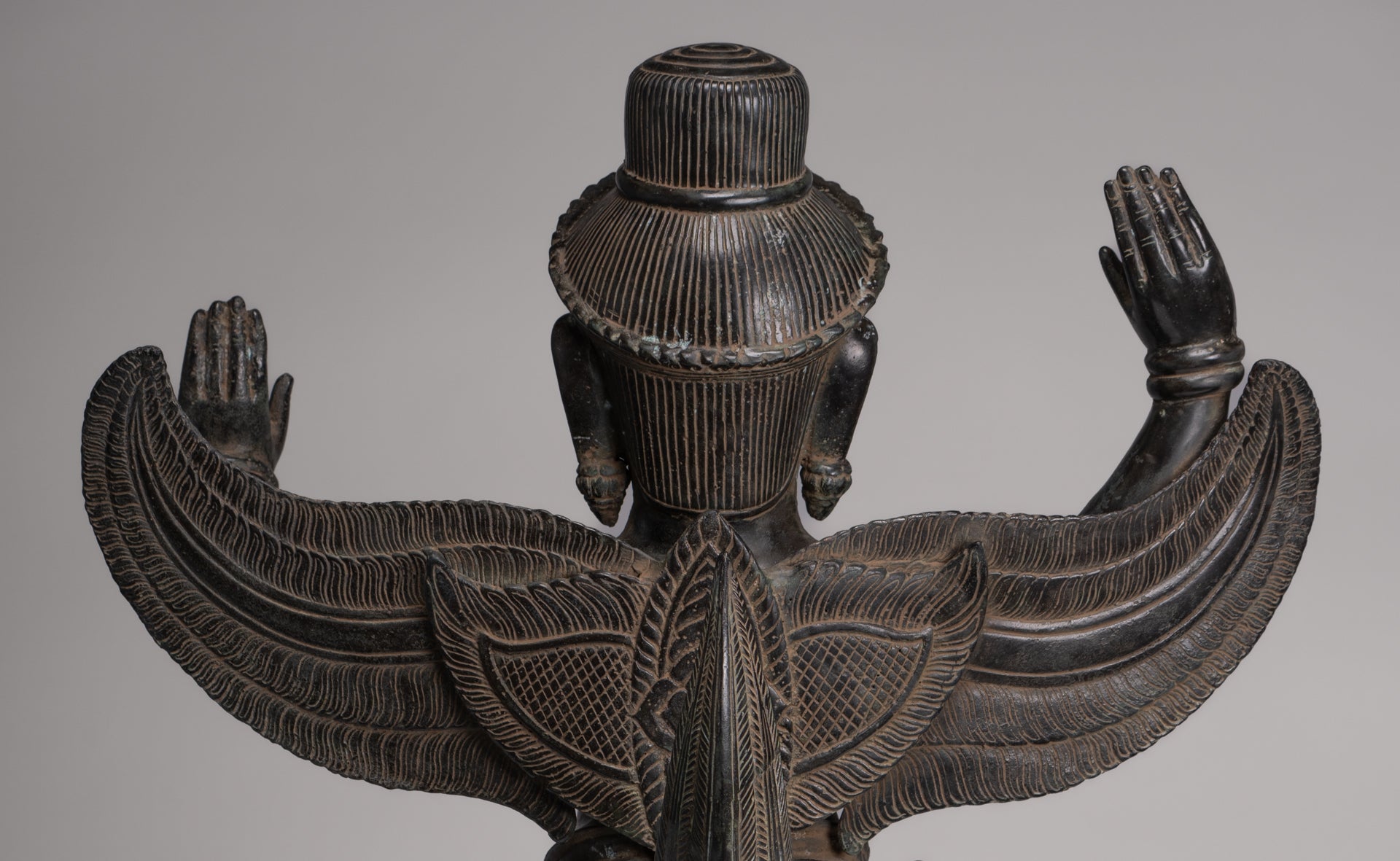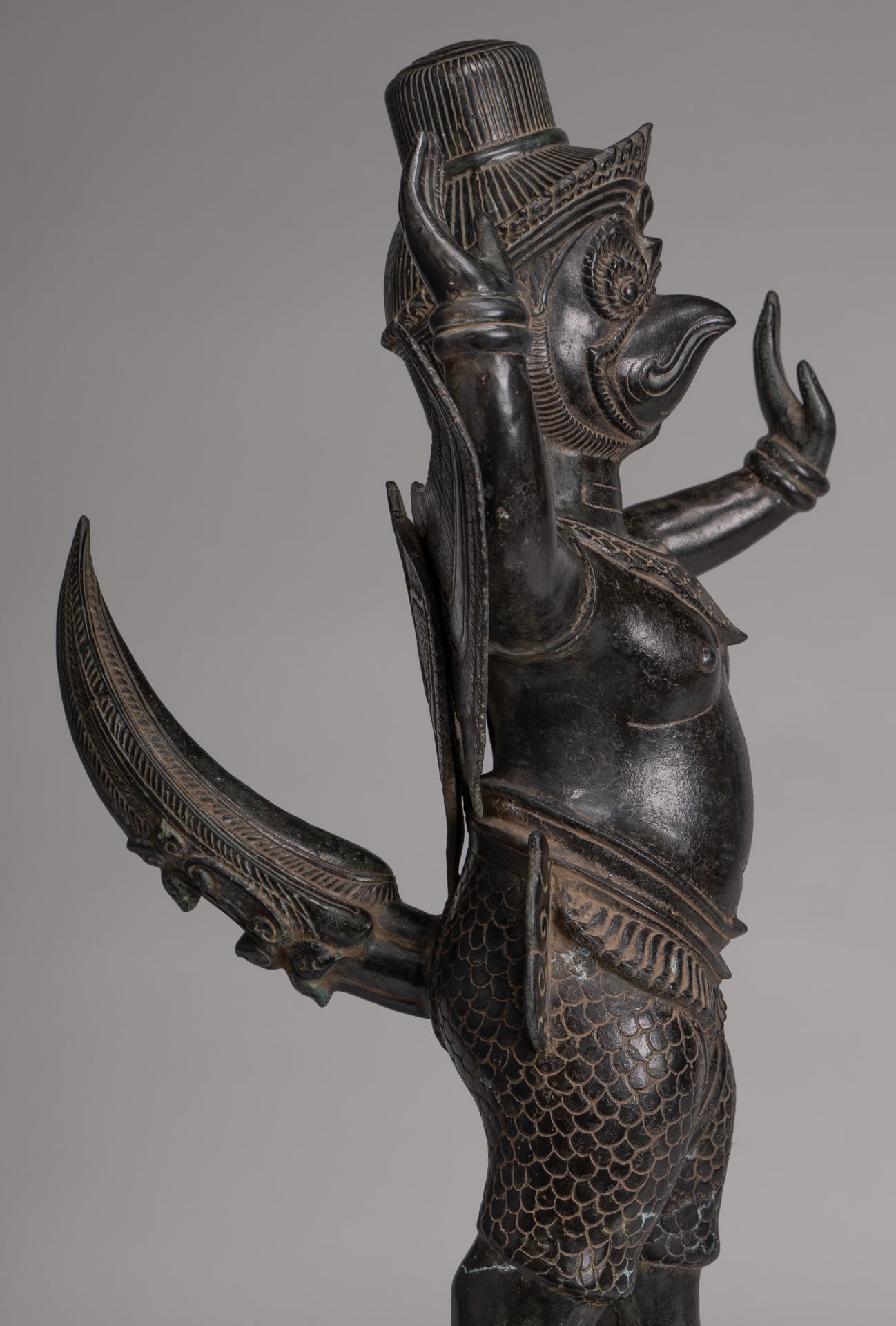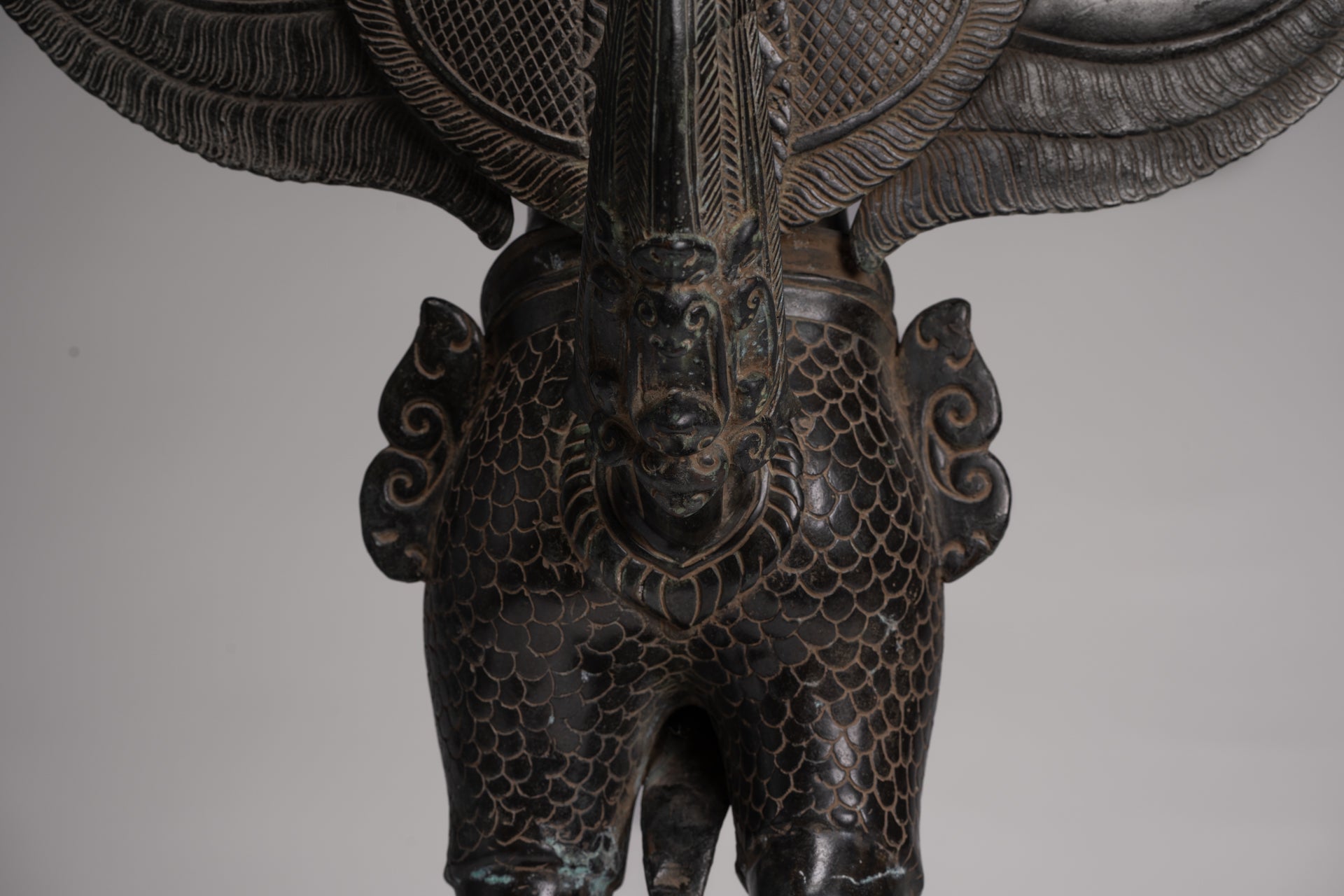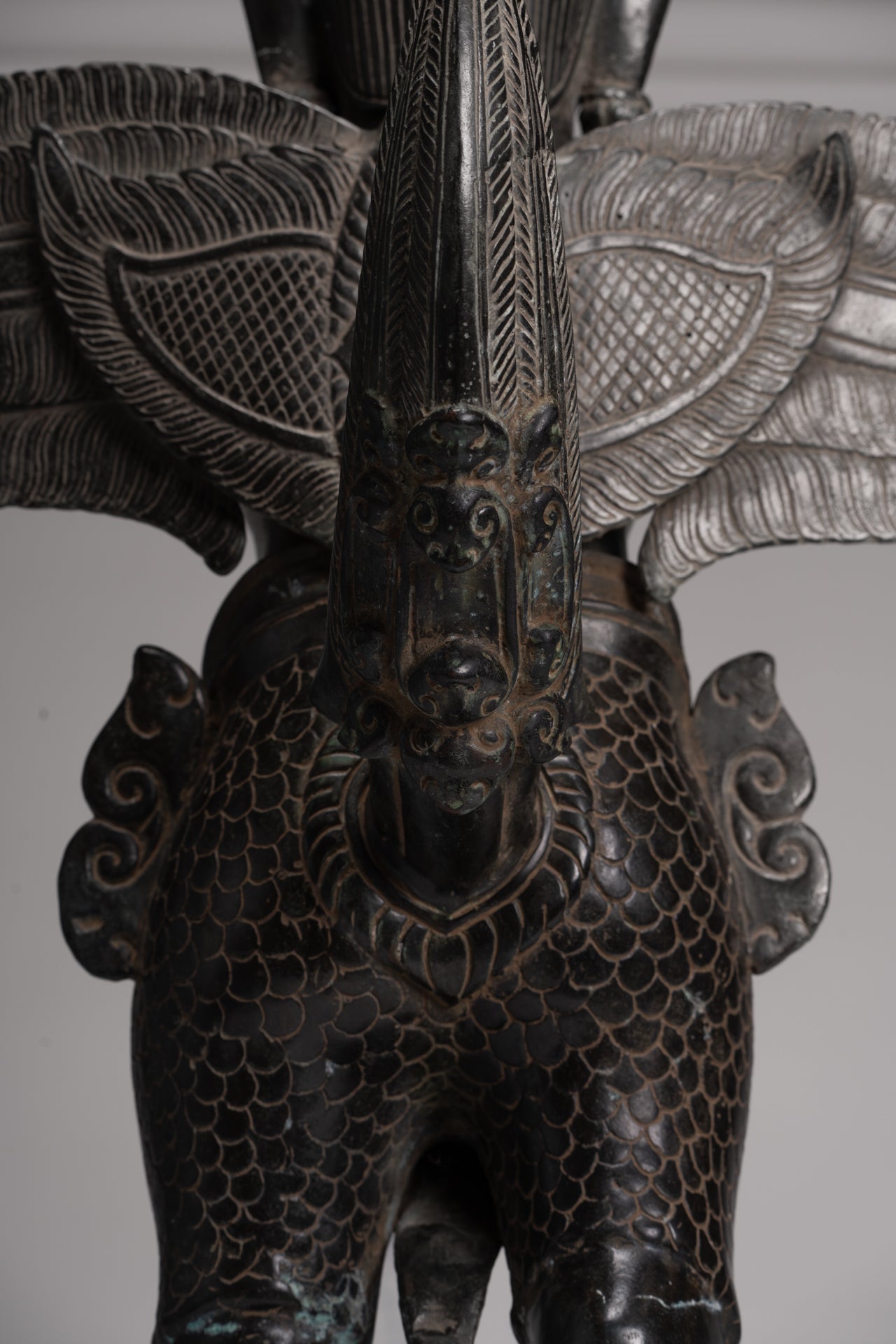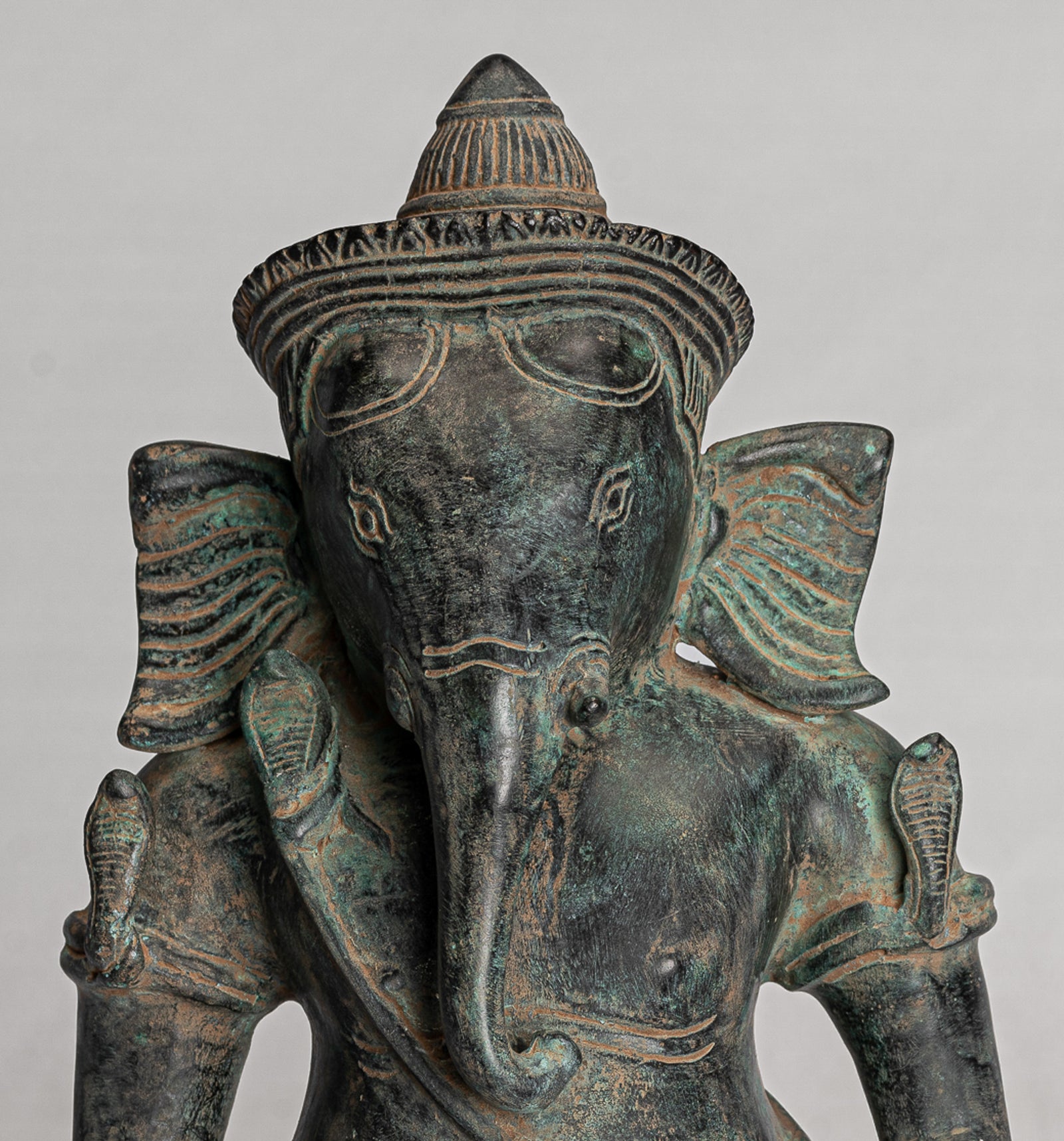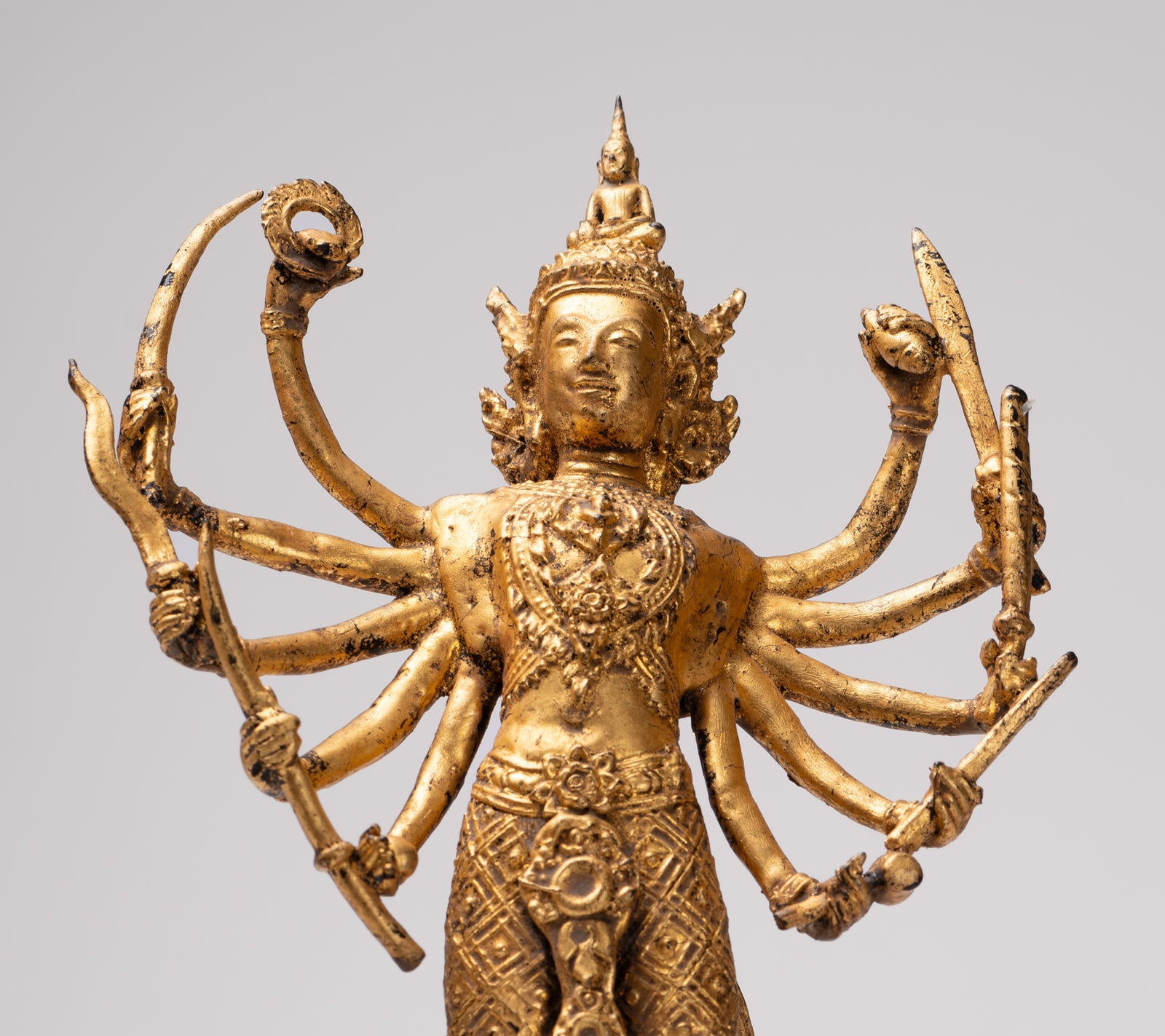-
Antique Banteay Srei Style Seated Bronze Khmer Vishnu Garuda Statue - 71cm/28"
Measures (Height) 71cm/28"
An antique Banteay Srei style bronze Khmer Garuda.
Garuda, the mythical bird-like creature, holds a revered place in both Hindu and Buddhist traditions. Known for his immense power, speed, and his role as the mount (vahana) of the Hindu god Vishnu, Garuda is a symbol of strength, protection, and the triumph of good over evil.
In Buddhism, Garuda is also a significant figure, often depicted as a protector and a symbol of wisdom.
Garuda's origins are rooted in ancient Indian mythology, particularly in the Vedas, Puranas, and epics like the Mahabharata and Ramayana. According to Hindu mythology, Garuda was born to Vinata and sage Kashyapa. His birth was marked by extraordinary events, as he emerged fully grown, radiant, and powerful. Garuda's most famous myth involves his quest to obtain the nectar of immortality (amrita) to free his enslaved mother from the clutches of her sister, Kadru, and her serpent sons, the Nagas.
Garuda's quest showcased his incredible strength and valor. He fought his way through numerous obstacles, outwitting the gods and demons to retrieve the amrita. This feat earned him the eternal enmity of the Nagas, symbolizing his role as their nemesis and protector against serpentine evil.
The Garuda is cast in the style of those seen at the great Banteay Srei temple in Cambodia - a 10th-century Cambodian temple dedicated to the Hindu god Shiva, ocated in the area of Angkor.
Important in both Hindu and Buddhist religions the Garuda is a large mythical bird with a wing-span of many miles, the bearer of Vishnu. Perhaps with a little 'poetic license' we are told that when the Garuda flaps it's wings hurricane winds arise that darken the sky and blow down houses.
In both Thailand and Indonesia the Garuda is seen as both a National and Cultural symbol.
Garuda’s significance in Hinduism and Buddhism transcends mere mythology, embodying profound spiritual and cultural values. As a symbol of strength, protection, and the victory of good over evil, Garuda inspires devotees to overcome obstacles and pursue higher knowledge.
His role as Vishnu’s mount in Hinduism and as a protector in Buddhism highlights his versatile and enduring presence in the spiritual and cultural landscape of Asia.
Through the ages, Garuda has remained a powerful and revered figure, inspiring art, literature, and national symbols. His legacy continues to be celebrated, reminding us of the timeless values of courage, wisdom, and devotion. Whether in the soaring heights of myth or the grounded reality of cultural identity, Garuda’s majestic flight continues to captivate and uplift those who seek his blessings and guidance.
The sable patina and details of this piece are particularly appealing.
SATISFACTION GUARANTEE - We have been offering SE Asian Art for many years and are proud of the reputation we have developed for fair and honest listings. However, if for any reason, whatsoever, you are unhappy with your purchase please just let us know and we will provide a full refund. We want you to be 100% happy with your purchase.
-
The majority of orders will be shipped with DHL. This is a secure, express and fully tracked service.
Items less than 2Kg we typically ship using Royal Mail.
Once we receive your order we try to ship all orders the same or next working day.
Large and/or fragile pieces requiring palletising, specialist crating and/or extra packaging may take a little longer. Palletised shipments will be delivered curbside.
All orders over 35 GBP will be shipped free of charge.

-
We genuinely hope that all purchases delight.
However, if they do not, regardless of reason, we will refund all orders upon receipt of the unwanted item. Just notify us within 14 days of receiving your order that you wish to make a return and send the piece back to us with 30 days of delivery.
The presence of Hindu statues in Thailand highlights the country’s rich historical interactions with India and its ability to integrate diverse traditions into a cohesive cultural identity.
These statues serve as reminders of a shared heritage, bridging past and present, and showcasing the enduring influence of Hinduism within a predominantly Buddhist nation.


